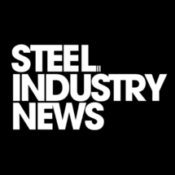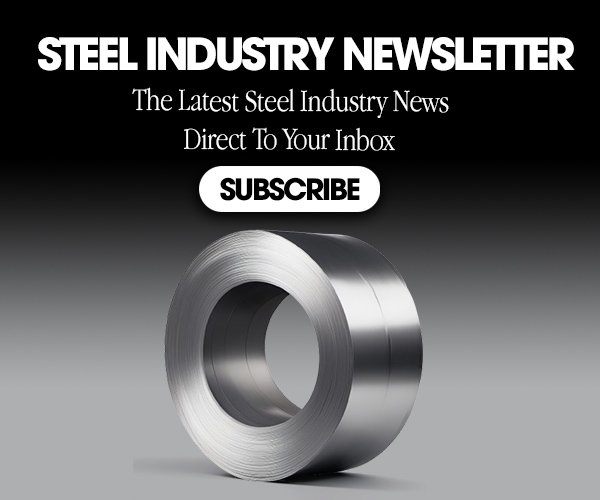Nucor Corporation‘s announcement of a $10 per ton reduction in its Consumer Spot Price (CSP) for hot-rolled coil (HRC) steel to $890/ton, effective August 4, 2025, marks a significant development in the U.S. steel market. This price adjustment reflects broader market dynamics including declining steel imports, softening demand, and strategic positioning by major steel producers amid ongoing trade policy uncertainties.
Understanding Nucor’s August 2025 Price Reduction
The Latest Price Movement
On August 4, 2025, Nucor reduced its HRC base price by $10 per ton to $890/ton for all producing mills, with California Steel Industries (CSI) maintaining a premium at $950/ton. This represents the latest in a series of price adjustments that began in May 2025, when Nucor initiated its first significant price reductions after months of consecutive increases.
The current pricing structure maintains Nucor’s typical 3-5 week lead times for spot orders, indicating that while prices are adjusting downward, production capacity remains stable and demand continues at manageable levels.
Historical Context: The $900 Price Level
The $890/ton price point brings Nucor’s HRC base price close to the psychologically important $900 level that has served as a benchmark throughout 2025. Industry analysts note that this price range has become a critical resistance and support level, with prices holding around $900 for several weeks during various points in the year.

Nucor Steel Price History: HRC Base Price Movements from July 2024 to August 2025, showing the recent $10/ton reduction to $890/ton
Factors Driving Nucor’s Price Reduction Strategy
Demand Softening Across Key Sectors
Steel-consuming industries are experiencing varied demand patterns that are influencing pricing decisions. The automotive sector, a major steel consumer, has seen production challenges with U.S. automotive production dropping 12% in March 2025. Meanwhile, construction activity remains mixed, with some infrastructure projects delayed due to 6-8% budget overruns caused by earlier steel price increases.
Mill capacity utilization has shown resilience, with rates reaching 79.6% in June 2025, the highest level of the year and up from 76.2% in the same period in 2024. However, this strong utilization comes as four new steel mills continue to ramp up production, potentially adding supply pressure to the market.
Strategic Market Positioning
Nucor’s price reduction strategy appears designed to maintain market share while responding to competitive pressures. The company’s pricing decisions contrast with competitor approaches, as Cleveland-Cliffs has maintained higher price points, creating opportunities for Nucor to capture volume-sensitive customers.
The steel industry’s pricing dynamics have become increasingly complex, with mills balancing raw material costs, production capacity, and customer relationships. Nucor’s willingness to reduce prices signals a pragmatic approach that prioritizes long-term customer relationships over short-term pricing maximization.
The Significant Decline in U.S. Steel Imports
Import Volume Reductions
One of the most notable developments supporting domestic steel pricing has been the substantial decline in U.S. steel imports throughout 2025. According to the American Iron and Steel Institute (AISI), total steel imports decreased by 9.6% month-over-month in June 2025, falling to 2,246,000 net tons.

U.S. Steel Imports Show Significant Decline in 2025, with consistent month-over-month decreases averaging 8.7% below 2024 levels
The year-to-date performance shows even more dramatic changes, with total steel imports down 4.7% and finished steel imports declining 7.8% in the first half of 2025 compared to the same period in 2024. Over the 12-month period from July 2024 to June 2025, total steel imports decreased by 1.2% while finished steel imports fell by 1.6%.
Impact of Trade Policies
The decline in imports reflects the ongoing impact of enhanced Section 232 tariffs, which President Trump increased from 25% to 50% on steel and aluminum imports effective June 4, 2025. These tariffs have created a protective environment for domestic steel producers while making imported steel significantly more expensive for U.S. buyers.
Key import trends include:
- Finished steel import market share estimated at 19% in June 2025, down from higher levels in previous years
- Major suppliers like Canada, Brazil, and South Korea showing mixed performance, with some countries experiencing significant volume reductions
- Regional supply chain adjustments as importers seek alternative sources or shift to domestic suppliers
Industry Polling Suggests Future Price Increases
Community Sentiment Analysis
Recent industry polling conducted by Steel Industry News reveals a complex outlook for steel pricing in the remainder of 2025. The July 2025 Community Pricing Poll showed cautious optimism with moderate price increases anticipated among more than 500 industry professionals.
The polling results indicate a divided but somewhat bullish sentiment, with industry participants citing several factors that could support price increases:
- Tariff-driven market changes creating supply constraints
- Evolving demand patterns in key sectors
- Cost pressures from raw materials and energy
- Infrastructure investment supporting long-term demand
Market Outlook Factors
Several structural changes in the steel market suggest potential for price increases in the coming months:
Supply-side pressures include ongoing raw material cost volatility, with iron ore prices showing 10% month-over-month increases and coking coal experiencing price pressures due to mining disruptions and safety inspections.
Demand-side indicators point to potential recovery, with steel capacity utilization remaining strong and inventory management by distributors and end users suggesting conservative but stable purchasing patterns.
Impact Analysis: Mills, Distributors, Manufacturers, and End Users
Steel Mills: Balancing Volume and Margins
For steel mills like Nucor, the current pricing environment requires careful balance between maintaining production volumes and preserving profit margins. The company’s operating rates increased to 85% in Q2 2025, up from 80% in Q1, indicating strong operational performance despite pricing pressures. Last week week U.S. mills produced an estimated 1,777k tons at a 78.4% utilization rate; this is up from 1,768k tons and a 78.0% rate previously.
Domestic production has now increased eleven out of the last fifteen week since mid-April.
Mill strategies include:
- Flexible pricing approaches to respond to market conditions
- Capacity optimization to maintain efficiency
- Cost management initiatives to offset margin pressure
- Customer relationship management to retain market share
Steel Distributors: Managing Inventory and Risk
Steel distributors face unique challenges in the current market environment. The European steel distribution sentiment survey shows growing pressure with worsening assessments of current activity and persistently negative price expectations.
Distributor challenges include:
- Inventory management in volatile pricing environments
- Margin compression from competitive pressures
- Lead time management with changing supplier dynamics
- Customer relationship balancing between service centers and end users
Manufacturing Sector: Cost Management Pressures
Steel-using manufacturers across various sectors are experiencing significant cost pressures from steel price volatility. The automotive industry faces particular challenges, with rising steel prices increasing vehicle production costs by $240 per unit.
Manufacturing impacts include:
- Budget planning difficulties due to price uncertainty
- Supply chain adjustments to manage cost exposure
- Product design modifications to optimize material usage
- Procurement strategy changes balancing contract and spot purchases
Construction and Infrastructure: Project Economics
The construction sector continues to grapple with steel price volatility impacts on project economics. Steel-intensive projects face 6-8% budget overruns, leading to delays in 12% of planned infrastructure starts in Q1 2025.
Construction sector responses include:
- Project scheduling adjustments to optimize material costs
- Value engineering initiatives to reduce steel intensity
- Contract renegotiation to manage cost exposure
- Alternative material consideration where feasible
Automotive Industry: Supply Chain Adaptation
The automotive sector, which consumes significant quantities of specialized steel grades, faces mounting cost pressures from both steel prices and tariff policies. Section 232 tariffs on steel and aluminum could potentially raise vehicle costs by $1,500 per unit.
Automotive industry adaptations include:
- Lightweighting initiatives to reduce steel content
- Supply chain diversification to manage cost exposure
- Design optimization for material efficiency
- Long-term contracting to stabilize input costs
Looking Forward: Market Dynamics and Pricing Outlook
Key Factors Influencing Future Pricing
Several critical factors will determine steel pricing trajectories through the remainder of 2025:
Trade policy evolution remains a primary uncertainty, with ongoing negotiations and potential adjustments to tariff structures potentially causing $50-$100 per ton price swings.
Global economic conditions and industrial recovery patterns will significantly influence demand across key sectors, particularly as monetary policy changes begin to impact economic activity.
Raw material cost trends, including iron ore, coking coal, and scrap prices, will continue to influence mill production costs and pricing strategies.
Regional and Global Considerations
The global steel market context shows mixed regional performance, with China experiencing 6.9% year-over-year production declines while India posts robust 9.7% growth. These global supply-demand imbalances create both opportunities and challenges for U.S. steel producers.
European market conditions also influence global pricing dynamics, with EU steel consumption projected to decline 0.9% in 2025 before recovering 3.4% in 2026.
The interplay between domestic production capacity, import levels, and end-user demand will ultimately determine whether the current $890/ton price level represents a temporary adjustment or a new equilibrium point for the U.S. steel market.
SOURCES
Steel Industry News – Nucor Reduces Hot-Rolled Coil Steel Price
Steel Industry News – Nucor Announces CSP Price Cut: Market Analysis, Price History and What’s Next
Steel Market Update – Nucor lowers HRC list price to $890/ton
American Iron and Steel Institute – Steel Imports Down 9.6% In June vs. May
Steel Radar – US steel imports decreased by 4.7% in the first half of 2025
Steel Radar – US steel imports decreased by 4.7% in the first half of 2025
White House – Fact Sheet: President Donald J. Trump Increases Section 232 Tariffs on Steel and Aluminum
Steel Industry News – Steel Industry News Community Pricing Poll May 2025
LinkedIn – [PODCAST] Steel Industry Community Pricing Poll: July 2025 Market Sentiment
LinkedIn – [PODCAST] Steel Industry Community Pricing Poll: July 2025 Market Sentiment
EUROFER – Economic and steel market outlook 2025-2026, second quarter
EUROMETAL – EU Steel Distribution: Sentiment slips further in July 2025 amid growing uncertainty
Steel Market Update – Most steelmaking raw material prices hold firm
LinkedIn – Global Steel Production Update – May 2025: Regional Challenges
Nucor Investor Relations – Nucor Reports Results for the Second Quarter of 2025
BLDuke – Staying Afloat – July 2025 Scrap Market Update
Steel Industry News – Nucor and Cleveland-Cliffs Adjust Steel Prices
Automotive Dive – Tariffs on steel, aluminum likely mean higher costs for auto industry
Check out our most recent articles below:
- Nucor’s Six-Week Price Surge: What It Signals for the Steel Market
- Nucor Increases Steel Prices Again
- Steel Industry and Manufacturing Demand: Understanding the Critical Decline in HVAC and Agricultural Equipment Sectors in 2025
- Steel Prices in November 2025: Market Dynamics, Price Drivers, and Industry Outlook
- The Dodge Momentum Index October 2025: Understanding Commercial Planning Momentum and Its Impact on Construction Spending
📬 Enjoying this article? Do not miss the next one.
SUBSCRIBE below to the Steel Industry News email newsletter to get the latest updates delivered straight to your inbox. Includes a comprehensive reporting of all key topics impacting the steel industry. 🌍The Most Recent Steel News Reports — in one easy-to-read weekly format
🔐 Annual Plan: Just $300/year – that’s 6 months free . – 💰 Best value of unbiased, timely reporting in the industry.









